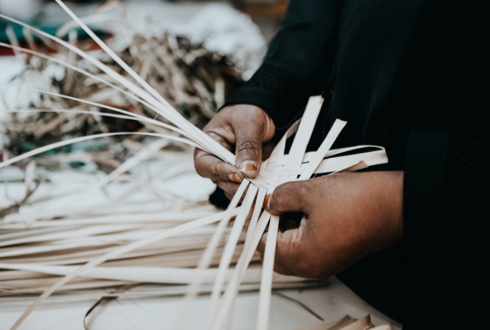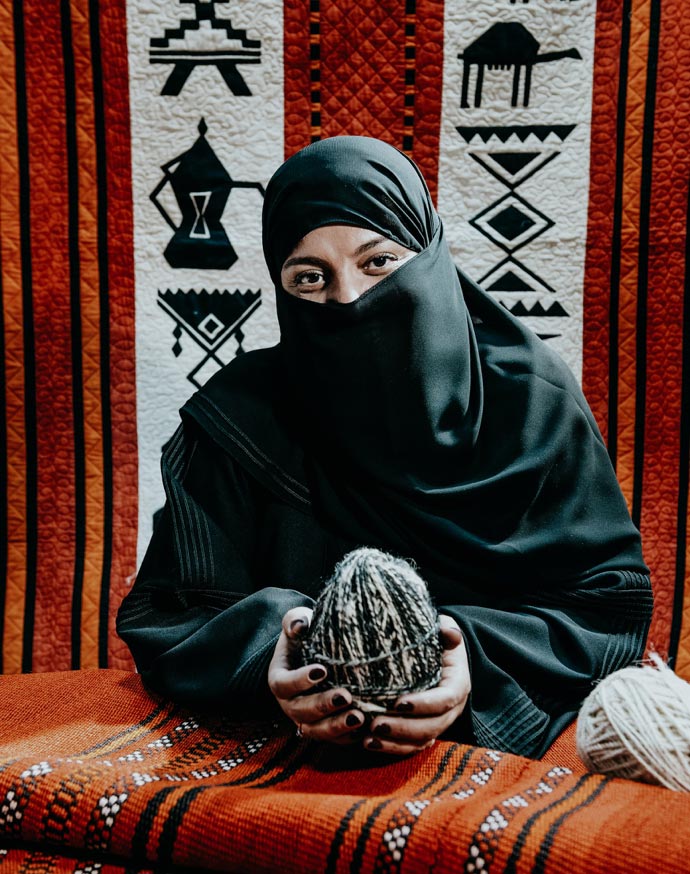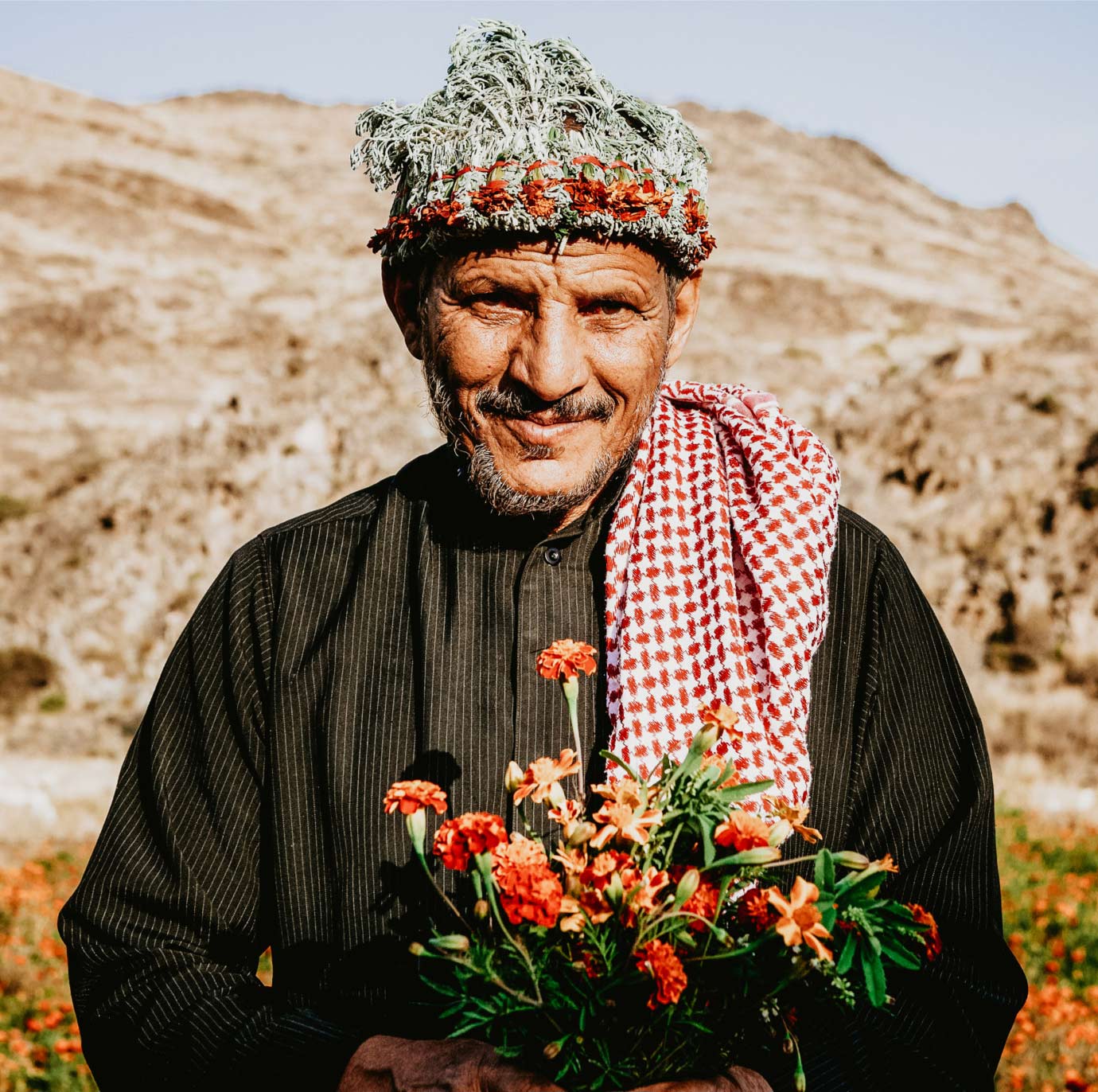The True Value Of Handicrafts
In this globalized marketplace, we all have become constant consumers. Encouraged by incessant advertising, we are always searching for the next best thing, with our wallets at the ready. Yet, we rarely reflect on the impact of our purchases after we leave the shop.

Every dollar, pound, euro or riyal we spend is connected to a long chain of commerce, stretched over seas and continents. And the longer the stretch, the smaller the distribution of value of the item purchased. A dress purchased for £100 on the High Street only provides a meagre daily wage for the person who actually made it in a factory in China, Indonesia or India.

Our spending habits are one of the most powerful ways we can express our values and priorities. In 2015 the Kingdom of Saudi Arabia spent $157 Billion on imports. As that money leaves the country, so do the jobs, and indeed a way of life. As conscious consumers we can use the force of our buying to support locally made products which are not only economically important to our communities, but also perpetuate cultural heritage and traditions.
Handicrafts are important in several significant ways. First, items like rugs, jewellery, hand-carved wood and ceramics all tell a story. They represent the identity of the people who made them and give a window into their lives and lifestyles. They are a source of pride, of character and of rich traditions.
Second, authentic handicrafts are made of indigenous raw materials. The need to source these raw materials creates a secondary market and demand for products like woods, gemstones, natural dyes and textiles. This demand creates a ripple effect of economic growth for the suppliers of the raw materials and tools, and in turn, their suppliers.

Third, many handicrafts are traditionally made by women, often in the home. In many countries where it is still difficult for women to work outside the home, selling hand made crafts is a great source of income for women. And studies show that economically empowered women lead to better societies.
For a long time, the best craft items remained in rural areas where traditional products are made and still used. Getting these craft products to bigger markets has been one of the greatest challenges faced by the industry. However, advances in trade and technology are allowing those products to come out of the small villages and compete in the global marketplace. Innovative social entrepreneurs are helping artisans scale their businesses to meet a growing demand for authentic, handcrafted products, while also meeting international quality standards.
A product with a story behind it is always more interesting than a generic item anyone could pick up at Ikea.
A handcrafted basket made by women in Bahrain, using local materials is not only beautiful, it also has impact.
That basket, when part of a fair-trade supply chain supports a community of small businesswoman. Alone, it would be very challenging for them to sell their baskets in large quantities outside their region, but e-commerce is connecting them to consumers all over the world who value the unique hand-crafted quality and want to support female artisans. This is how we can use our purchasing power to make a real and lasting positive change in the world.

It is crucial to emphasize the role of small businesses as a powerful economic engine fueling national economies at all levels. The “Mom and Pop” shops and businesses are the backbone of our communities, providing the products we need, employing our friends and neighbors and being a source of stability when global markets fluctuate. Small businesses are part of a vital business ecology creating a source of employment for generations. If there are no jobs, we know that younger generations will leave the small towns and villages, and with them goes our culture and way of life.
Importantly, acting as a conscious consumer is not just to be considered a benevolent act of charity, because it is so much more than that.
Hand-crafted products have true personality and more appeal than factory made items found anywhere. They express character, skill and culture.
Some artisans are now working with mainstream designers to create products which combine the traditional with the modern and useful. And through growing ecommerce trade we don’t have to search to the globe to find the unique and beautiful; rather they can be shipped right to our door anywhere in the world.
Your money is your voice in our global economy. Carefully consider your options when shopping for home-décor, jewellery, textiles and special gifts. You can always take the cheap and easy option and pick up something made in a factory in China, growing their economy and all the people between you and that factory worker. Or you can decide to use your money to support a traditional artisan, creating one-of-a-kind products. The secret weapon each country holds within its competitive advantage is its indigenous handicrafts. Use your purchasing power to align your spending with your values. This not only keeps tradition alive, but it is the engine that creates sustainable and vibrant communities and markets.

Siri Trang Khalsa works to create sustainable economic models within the context of international development and social entrepreneurship. She has substantial experience in the public and private sectors and earned a Masters of Public Administration from Harvard’s Kennedy School of Government.



